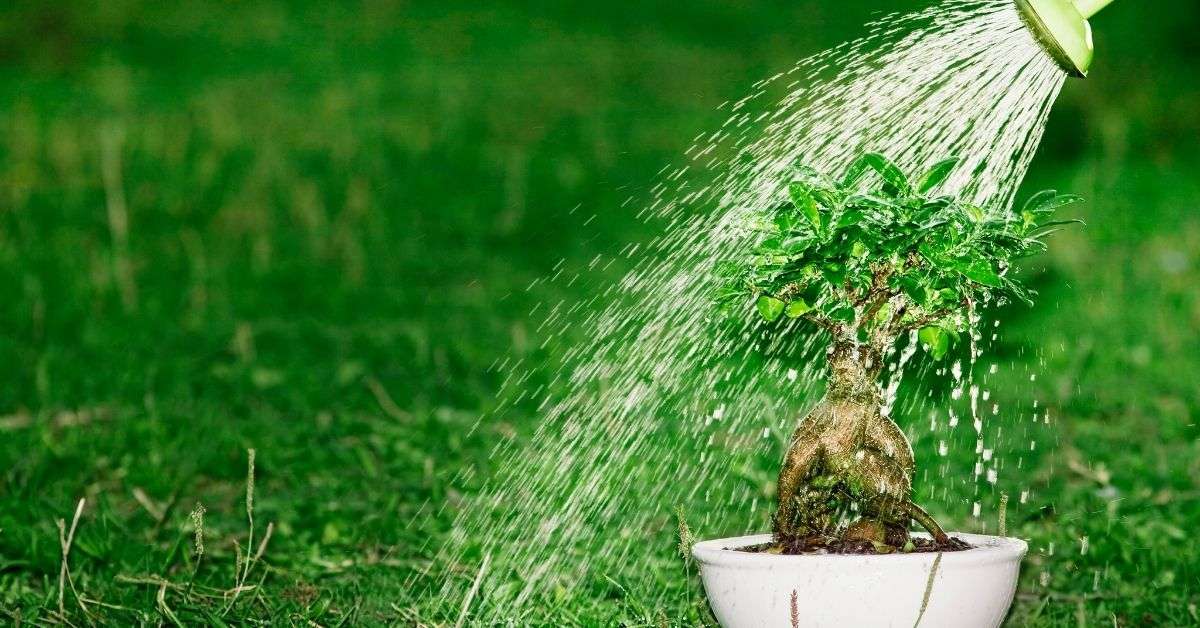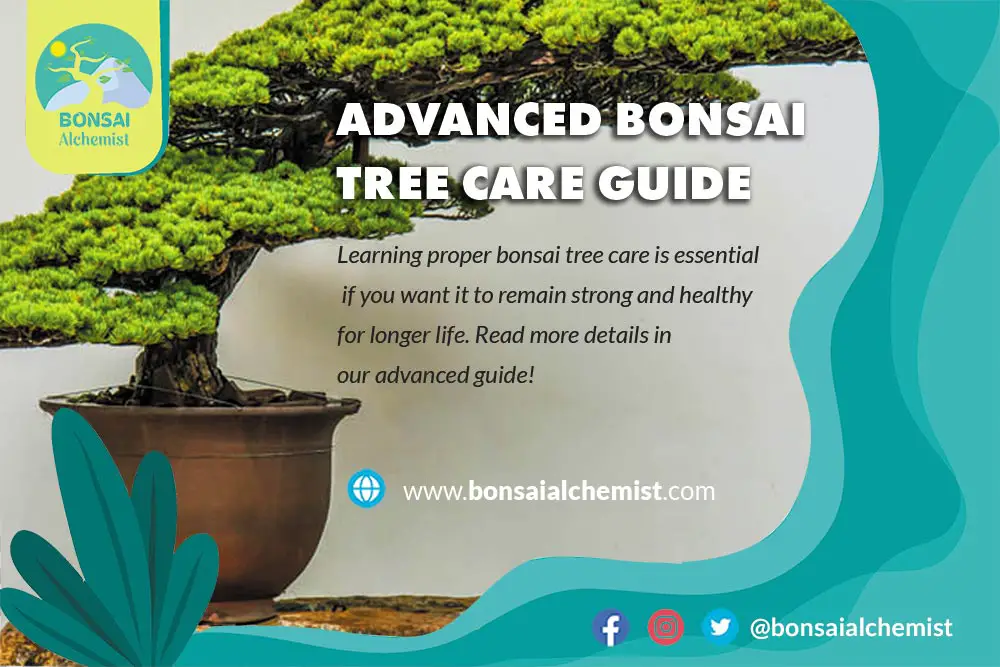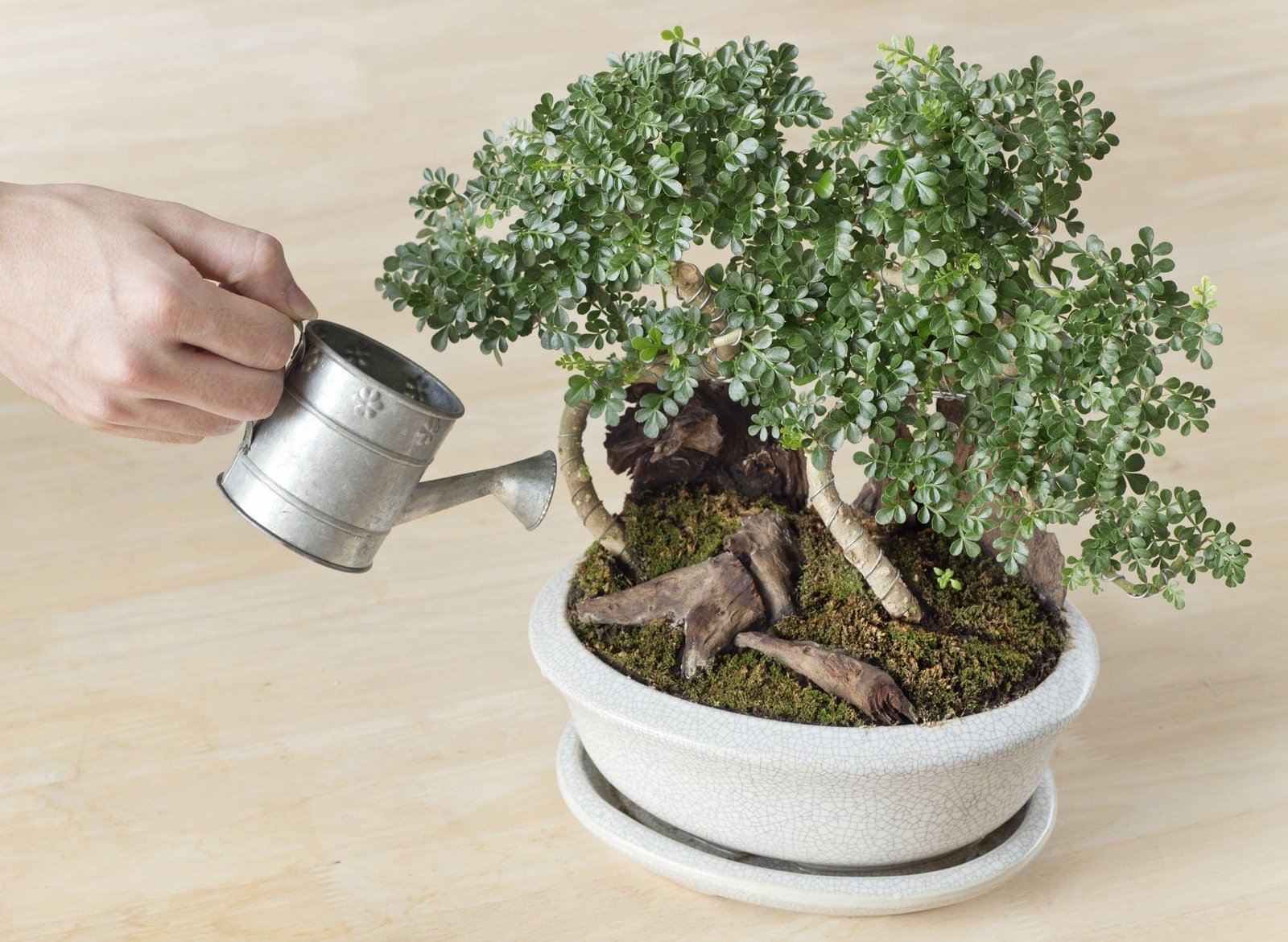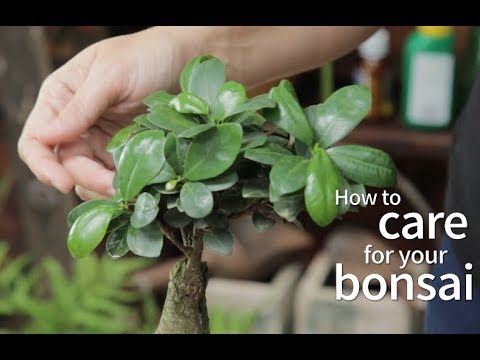Proper drainage is essential for bonsai trees, as it promotes healthy root growth and prevents root rot. When it comes to bonsai cultivation, I’ve come to realize just how crucial it is to ensure that excess water can easily escape from the pot.
This article aims to shed light on the importance of drainage for bonsai trees and provide valuable insights on why pots with drainage holes are a must-have for any bonsai enthusiast.
Let’s dive into the world of bonsai and explore the significance of this seemingly small yet crucial aspect of bonsai care.
What is drainage in bonsai trees?
Drainage, in the context of bonsai trees, refers to the ability of the potting medium to allow excess water to flow out of the pot, preventing waterlogging and ensuring the roots have access to vital oxygen. Proper drainage ensures that the roots receive an ideal balance of moisture and oxygen, creating an environment where bonsai trees can flourish.
The importance of drainage for bonsai trees
Good drainage is essential for the overall health and development of bonsai trees. Without it, the roots can become waterlogged, leading to root rot and other detrimental effects. Proper drainage helps prevent these issues and promotes healthy root growth, which is vital for the tree’s overall well-being.

Issues with improper drainage
Improper drainage can pose several problems for bonsai trees. When excess water cannot escape from the pot, it accumulates at the bottom, leading to waterlogged soil. This stagnant water deprives the roots of oxygen, resulting in suffocation and root rot. Additionally, without proper drainage, nutrient deficiencies or toxicities may occur, further compromising the tree’s health.
Effects of poor drainage on bonsai trees
The consequences of poor drainage can be detrimental to the overall health and appearance of bonsai trees. Stunted growth and weak tree health are common outcomes when roots are unable to breathe due to waterlogged soil. Yellowing and wilting leaves can also be a sign of inadequate drainage, as the roots become stressed and unable to absorb nutrients properly. In severe cases, root rot and fungal diseases can occur, leading to root suffocation and ultimately, the death of the bonsai tree.

Understanding Drainage in Bonsai Trees
To grasp the concept of drainage in bonsai trees, it is important to delve deeper into the factors that influence it. The combination of soil and water plays a significant role in achieving optimal drainage. Additionally, the design of the bonsai pot and the type of soil used are crucial factors to consider.
Definition of drainage in bonsai trees
In the context of bonsai trees, drainage refers to the ability of the potting medium to allow excess water to flow freely out of the pot, preventing the roots from sitting in water. It ensures a balance between moisture and oxygen, creating an environment that promotes healthy root development and overall tree growth.

The role of soil and water in bonsai tree drainage
Soil and water work hand in hand to influence the drainage in bonsai trees. The soil composition, particle size, and water-holding capacity determine how quickly water drains through the potting medium. The right combination of these factors ensures that excess water can escape, preventing waterlogging and providing ideal conditions for root growth.
Factors influencing drainage in bonsai pots
Several factors can influence drainage in bonsai pots. The size and material of the pot play a role in how water flows through the soil. Clay pots, for example, allow for better drainage compared to plastic pots. The composition and particle size of the soil used also affect drainage, with well-draining materials like pumice or bonsai soil mixes promoting better water flow.
The presence of drainage holes and the use of wire mesh or mesh screens can further enhance the drainage capabilities of the pot.

Importance of Proper Drainage
Proper drainage is vital for the health and vitality of bonsai trees. Let’s explore some of the key reasons why proper drainage should never be overlooked when caring for these miniature trees.
Preventing waterlogged soil
One of the primary purposes of proper drainage is to prevent waterlogged soil. When excess water cannot escape from the pot, it accumulates at the bottom, saturating the soil and suffocating the roots. By providing adequate drainage, we can avoid this issue and ensure that the roots have access to oxygen.
Promoting healthy root growth
Healthy root growth is essential for the overall well-being of bonsai trees. Proper drainage allows oxygen to penetrate the root system, facilitating optimal nutrient absorption and promoting strong, vigorous roots. When the roots are able to thrive, the tree above ground flourishes as well.
Avoiding root rot and overwatering
Improper drainage can lead to root rot and overwatering, both of which can have devastating consequences for the bonsai tree. When the roots sit in water for extended periods, they become susceptible to fungal infections and diseases. By providing adequate drainage, we can prevent root rot and ensure the longevity of our bonsai trees.
Allowing oxygen to reach the roots
Oxygen is crucial for root health and function. When the soil is waterlogged, oxygen cannot reach the roots, leading to suffocation and poor nutrient uptake. Proper drainage ensures that oxygen can freely flow through the soil, providing the roots with the vital element they need to thrive.
Issues with Improper Drainage
Improper drainage in bonsai pots can lead to a range of issues that can impact the health and vitality of the tree. Let’s explore some of the common problems that arise when drainage is inadequate.
Water accumulation in the pot
The most obvious issue with improper drainage is the accumulation of water in the pot. Without an outlet for excess water to escape, it pools at the bottom, saturating the soil. This stagnation deprives the roots of oxygen, leading to root suffocation and other detrimental effects.
Lack of oxygen for the roots
When the soil becomes waterlogged, the roots are deprived of oxygen. This lack of oxygen can have severe consequences, resulting in root suffocation and poor nutrient absorption. Without proper drainage, the roots cannot function optimally, impacting the overall health of the bonsai tree.
Nutrient deficiency and toxicity
Improper drainage can lead to nutrient deficiencies or toxicities in bonsai trees. When excess water cannot escape, it can wash away essential nutrients or cause the accumulation of harmful salts in the soil. This imbalance can negatively impact the tree’s growth and overall health.

Effects of Poor Drainage
The effects of poor drainage on bonsai trees can be detrimental, affecting both their appearance and long-term survival. Let’s explore some of the common consequences of improper drainage.
Stunted growth and weak tree health
One of the visible effects of poor drainage is stunted growth and weak overall tree health. When the roots are waterlogged and deprived of oxygen, their ability to absorb nutrients is compromised. This nutrient deficiency manifests in slow growth and a weakened tree that lacks vigor.
Yellowing and wilting leaves
Inadequate drainage can also manifest in the appearance of the tree. Yellowing and wilting leaves are common symptoms of poor drainage, indicating that the roots are under stress and unable to absorb nutrients properly. This visual cue serves as a warning sign that the drainage needs to be addressed to prevent further damage.
Root rot and fungal diseases
Root rot and fungal diseases are serious consequences of poor drainage. When the soil remains consistently wet, it creates an environment favorable for fungal growth. These infections can quickly spread throughout the root system, leading to further root damage and deterioration of the tree’s overall health.
Root suffocation and death
Without proper drainage, the roots can suffocate in waterlogged soil. They are unable to access oxygen, which is crucial for their survival. Root suffocation can quickly lead to the death of the bonsai tree if left unaddressed.
Defining Drainage in Bonsai Trees
When discussing drainage in bonsai trees, it is essential to understand the concept and how it relates to pot design and soil selection. Let’s delve deeper into the definition of drainage in bonsai and explore the factors that contribute to effective drainage.
The concept of drainage in bonsai
Drainage in bonsai refers to the ability of the potting medium to allow excess water to flow freely out of the pot, preventing waterlogging and ensuring proper oxygenation of the roots. It involves creating an environment where water can escape while retaining enough moisture to sustain the tree’s needs.
The role of bonsai pot design in drainage
The design of the bonsai pot plays a significant role in drainage. Pots with drainage holes allow excess water to flow out, preventing waterlogging. The number and size of the holes should be appropriate for the size of the tree and the pot to ensure optimal drainage.
Different types of bonsai soil
Various soil compositions can be used in bonsai cultivation, each with its drainage capabilities. Bonsai soil mixes often contain components like akadama, pumice, and lava rock, which promote good drainage. The selection of the right soil composition is essential for achieving adequate drainage and supporting healthy root growth.
Soil and Water Relationship
Understanding the relationship between soil and water is crucial for achieving proper drainage in bonsai trees. Let’s explore the significance of soil structure and water absorption capacity in relation to drainage.
Understanding the importance of soil structure
Soil structure plays a vital role in drainage. Bonsai soil mixes often consist of particles of different sizes that create air spaces between them. These air spaces allow for water to flow through while retaining enough moisture for the tree’s needs. A well-structured soil promotes optimal drainage and root health.
Water absorption capacity of bonsai soil
The water absorption capacity of bonsai soil refers to its ability to retain and release water. Soil with good water-holding capacity ensures that excess water can drain, preventing waterlogging. Balancing water retention and drainage is essential to create an environment that supports healthy root growth.
Balancing water retention and drainage
Achieving the right balance between water retention and drainage is critical for bonsai trees. While it is important to retain enough moisture for the tree’s needs, excessive water retention can lead to waterlogged soil. Bonsai soil mixes with good drainage properties strike this balance, providing an optimal environment for the roots.
Factors Affecting Drainage
Several factors can affect the drainage capabilities of bonsai pots. Understanding these factors is essential for creating an environment that promotes effective drainage.
Pot size and material
The size and material of the bonsai pot can influence drainage. Larger pots generally allow for better drainage compared to smaller pots, as there is more room for excess water to flow out. Additionally, certain materials, like clay pots, tend to have better drainage properties than plastic pots.
Soil composition and particle size
The composition and particle size of the soil used in bonsai pots can significantly impact drainage. Bonsai soil mixes often contain components like akadama, pumice, and lava rock, which improve drainage by creating airspaces between the particles. The right combination and particle size provide adequate drainage for the roots.
Presence of drainage holes
The presence of drainage holes is essential for effective drainage. These holes allow excess water to flow out of the pot, preventing waterlogging. The number and size of drainage holes should be appropriate for the tree’s size and the pot to ensure optimal drainage.
Placement of wire mesh or mesh screens
Wire mesh or mesh screens can be placed over the drainage holes to prevent the soil from escaping while still allowing water to pass through. This additional layer helps maintain proper drainage while keeping the soil contained within the pot.
Preventing Waterlogged Soil
To prevent waterlogged soil and promote proper drainage, certain measures can be taken. Let’s explore some strategies to ensure water flows freely through the potting medium.
Choosing pots with proper drainage holes
Selecting pots with appropriate drainage holes is crucial for preventing waterlogged soil. These holes allow excess water to escape and should be proportionate to the size of the tree and pot. Ensuring proper drainage hole placement is vital for optimal drainage.
Using appropriate soil composition
Using an appropriate soil composition is key to achieving good drainage. Bonsai soil mixes that contain components like akadama, pumice, and lava rock offer excellent drainage capabilities. Avoiding heavy soils or those that retain excessive moisture promotes better drainage and root health.
Using drainage layers in the pot
Adding drainage layers in the pot can further enhance drainage. These layers, which can consist of materials like coarse sand or gravel, create a space for excess water to collect at the bottom of the pot while keeping the soil above well-drained.
Balancing watering frequency and amount
Proper watering practices play a crucial role in preventing waterlogged soil. Balancing the watering frequency and amount ensures that the soil does not become oversaturated. Monitoring the moisture levels and adjusting watering accordingly promotes better drainage and maintains a healthy root environment.
Promoting Healthy Root Growth
Healthy root growth is vital for the overall well-being of bonsai trees. To promote optimal root development, proper drainage is essential. Let’s discover how good drainage supports healthy roots.
Encouraging oxygen exchange in the roots
Proper drainage facilitates oxygen exchange in the roots. When excess water cannot escape, it fills the air spaces in the soil, depriving the roots of oxygen. Good drainage ensures the roots have access to the oxygen they need, promoting healthy growth and function.
Preventing suffocation and root rot
Waterlogged soil can suffocate the roots, leading to their deterioration and potential death. By providing adequate drainage, we prevent suffocation, ensuring the roots can breathe and absorb essential nutrients. This promotes the overall health of the roots and the tree as a whole.
Good drainage for nutrient absorption
Effective drainage is crucial for optimal nutrient absorption by the roots. When the soil is waterlogged, the roots are unable to absorb nutrients properly. Adequate drainage allows for the controlled release of nutrients, ensuring that the roots can access them for healthy growth and development.
In conclusion, proper drainage is essential for the health and vitality of bonsai trees. It prevents waterlogged soil, promotes healthy root growth, and avoids issues such as root rot and overwatering. Good drainage allows oxygen to reach the roots and creates an optimal environment for nutrient absorption.
By understanding the concept of drainage, considering factors that influence it, and implementing strategies to ensure effective drainage, we can provide the best conditions for our bonsai trees to thrive. Remember, when it comes to bonsai, proper drainage is truly the key to success.
Bibliography:
- “Bonsai Soil.” American Bonsai Society, www.absbonsai.org/beginner/growing-bonsai-soil/. Accessed 27 Sept. 2021.
- Rittershausen, Peter, and Remy Samson. Bonsai Basics: A Comprehensive Guide to Care and Cultivation. Sterling Publishing Co., Inc., 2020.


